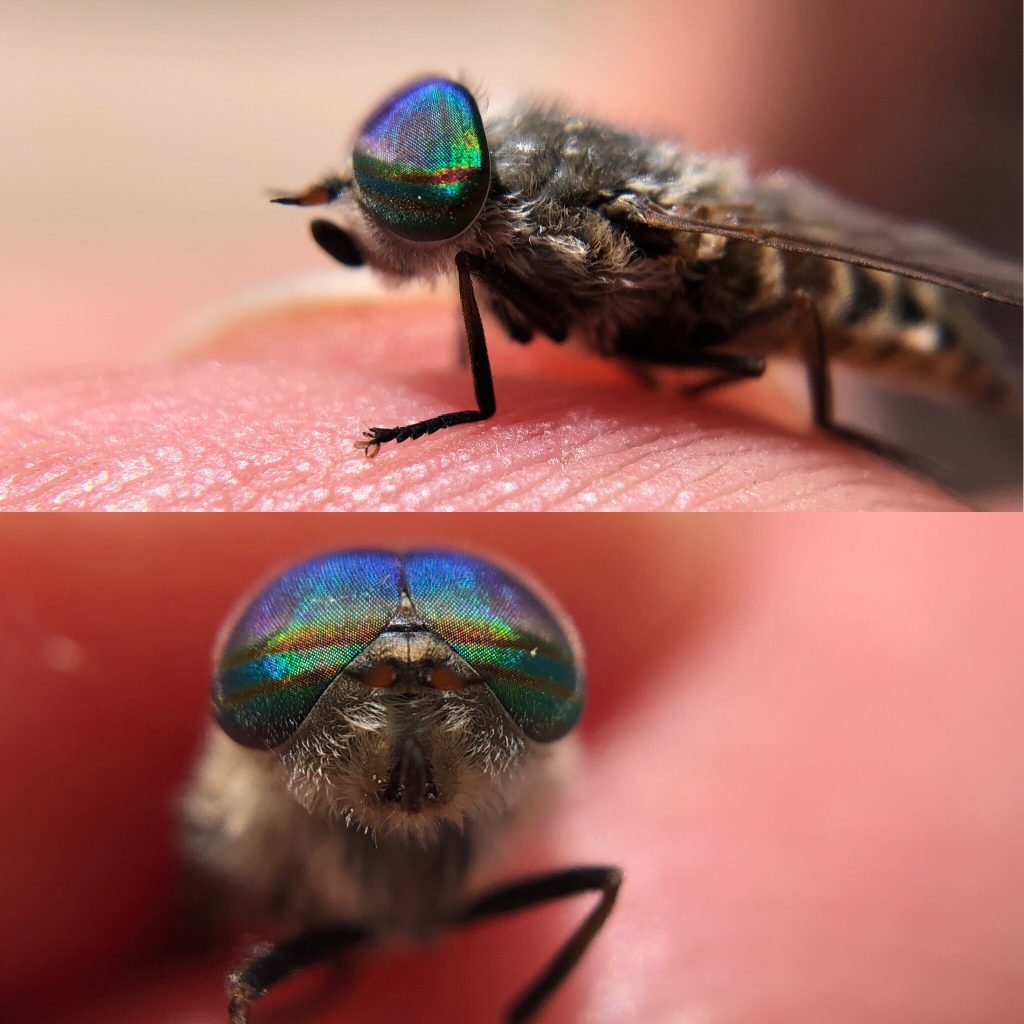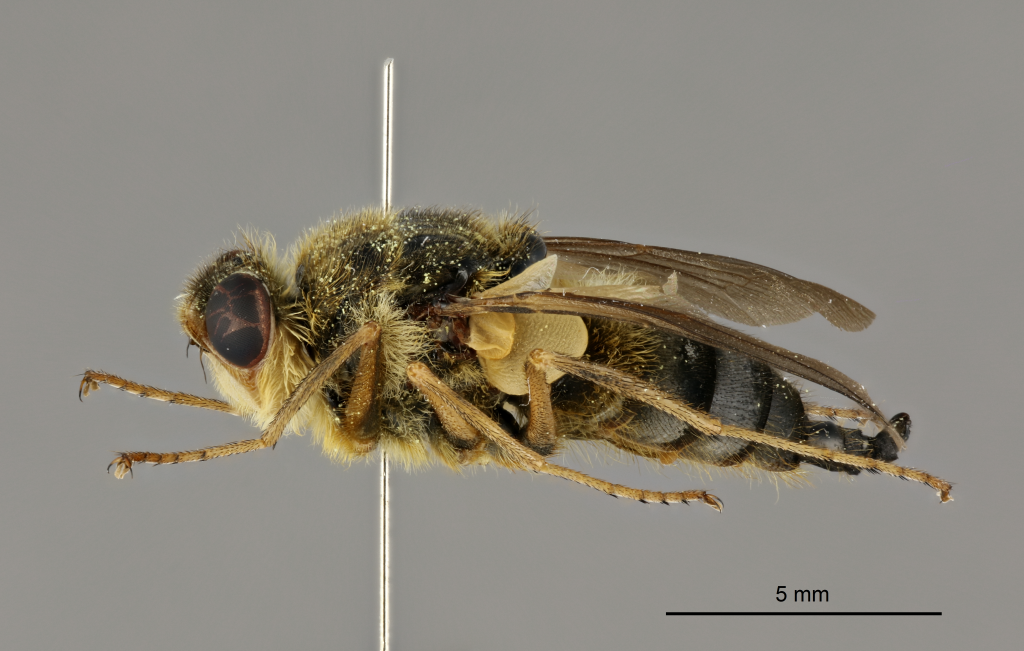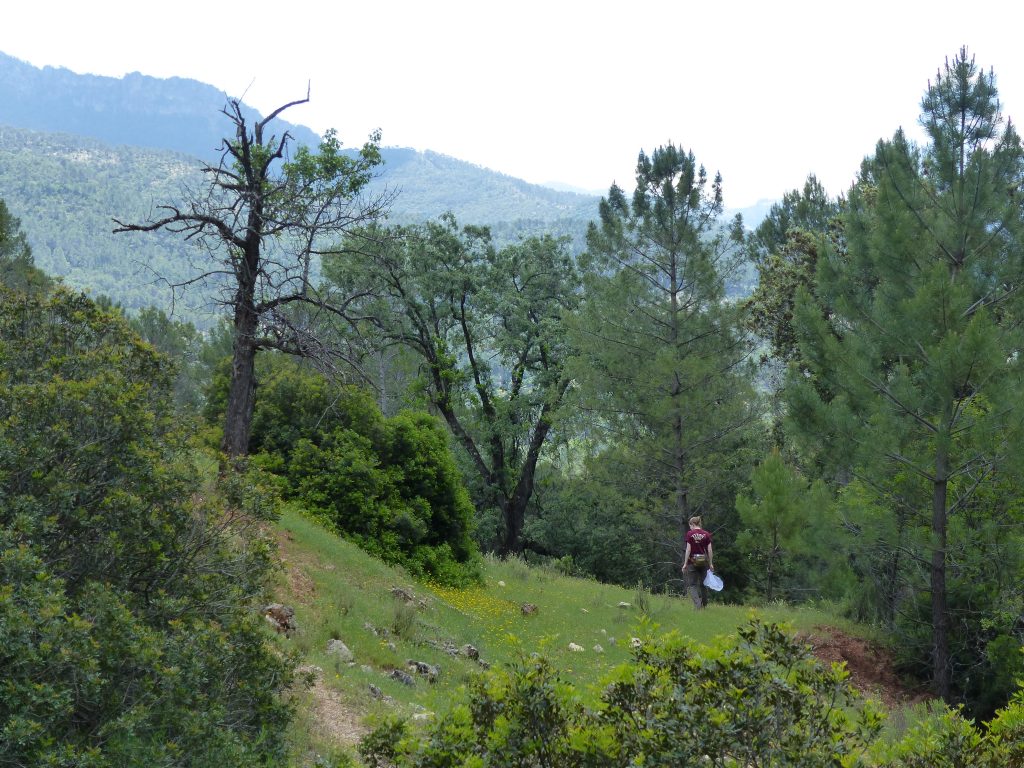
As Assistant Curator of Entomology, around 90% of my time each year is spent working with preserved insect specimens within the walls of the National Museums Collection Centre. Fieldwork is a total contrast from my usual working environment and is something I always look forward to. For the last two field seasons I have been very fortunate to join a team of other entomologists in the Natural Park of Sierras de Cazorla in the Jaén province of Spain. The park is Spain’s largest protected area and is a place of exceptional ecological importance.
Back in May 2018, I joined colleagues from The Malloch Society and Alicante University’s Institute of Biodiversity (CBIO), including former NMS Pelham-Clinton research fellow, Dr Antonio Ricarte, for our first visit to the park. The aim of the trip was to contribute to the list of insect species known from the area, and our special focus was to investigate the Diptera – ‘true flies’ – of the region.

From left to right: Geoff Wilkinson, Dr Graham Rotheray, Dr Eduardo Galante, Dr Mª Ángeles Marcos-García, Ashleigh Whiffin, Geoff Hancock, Ken Watt, Dr Zorica Nedeljković, Dr Antonio Ricarte, David Horsfield, Stephen Hewitt & Dr Vladimir Blagoderov.
Last June I returned to Sierras de Cazorla with a smaller team of Malloch members and continued our investigation. We visited new areas of the park and this time we were fortunate to meet with Dr Carlos Herrera, who has been studying plant-pollinator interactions in the area for over 20 years. Visiting three weeks later than the previous year, there was a huge difference in the temperature, vegetation and therefore the types of insects we were finding.

Female Conehead Mantis (Empusa pennata) 
A Hunch-back Fly (Cyrtus gibbus)
One of the hazards of fieldwork are the biting insects and, of course – ticks! Long trousers tucked into socks is a standard to protect against tick bites, but vigilance is also key. Female horse-flies are also voracious blood-feeders, but did you know that the males don’t feed on blood? They instead feed on nectar or pollen and many have incredible, colourful eyes. They’re holoptic, meaning that the eyes meet at the top of the head, as seen below.

A tick clinging to the long grass in a meadow 
A captured horse-fly (Tabanidae)
The days can be very long (and sticky) but being surrounded by such incredibly knowledgeable colleagues and having the opportunity to learn from them, in the field, is just brilliant. More importantly, fieldwork is a vital element of our work, enabling us to develop the collection and our specific research interests. Collecting voucher specimens (a preserved specimen that serves as a point of reference) is essential to achieve correct identifications of the insects.


Geoff Hancock demonstrating the collecting technique of using an aspirator, or “pooter” to suck up flies
Only a very limited number of species can be recognised in the field or from photographs. Most require examination under a microscope, and many must be dissected. All the specimens I collected have now been mounted and labelled, and I am now working my way through the identifications. This can be a very lengthy process and we don’t have all the in-house expertise to cover all the groups collected, so some specimens may be examined by other specialists. Ultimately, all this knowledge will be pulled together and the list of species we have found passed on to the park.
Some of these species may be endemic – so not found anywhere else other than Cazorla Natural Park. Other members of the team have even discovered a couple of species new to science from our visits, which makes the heat and hard work well worth it!

Deer warble fly (Hypoderma diana) 

Mounted specimens being labeled
A particularly fascinating fly we collected was a striking black a yellow hunch-back fly (Acroceridae). These tiny-headed insects are not frequently encountered and are parasitoids of spiders. Unable to identify it in situ, I brought it back to examine under the microscope and now know this is Cyrtus gibbus. The adults possess a long proboscis for feeding on nectar; it is the larvae who are the spider killers! They actively search for a host and when one is found the larva crawls up the spider’s legs then forces its way into the body cavity, where it feeds.

Possibly my favourite fly of this trip was this warble fly. Initially, when it buzzed around me at head height I thought it might be a hover fly. After catching it in my net and holding the fly to take a closer look (and this photo) I quickly realised it was an Oestridae (warble fly). It has now been identified it as Hypoderma diana. Female deer warble flies, like this one, lay their eggs on the legs of the deer and when the larvae hatch out they penetrate the skin, migrating through the body of the deer as they feed on the tissue. Once they’ve had enough to eat they erupt out of the back of the deer and drop to the forest floor where they pupate, emerging later as an adult fly. What a lifecycle!

The time really has flown since my first visit to Cazorla – it’s hard to believe we are nearing the end of 2020! With all fieldwork postponed due to the pandemic, we did not return to Spain this year. I hope that our plans for next field season will be realised, and in the meantime the work continues with many specimens still to be identified.
In 2019, entomologists across the world celebrated the ‘Year of The Fly’. To commemorate this we shared an array of fly specimens from our insect collection via social media, a different one each Friday! You can take a look back at a them here: #YearOfTheFly




